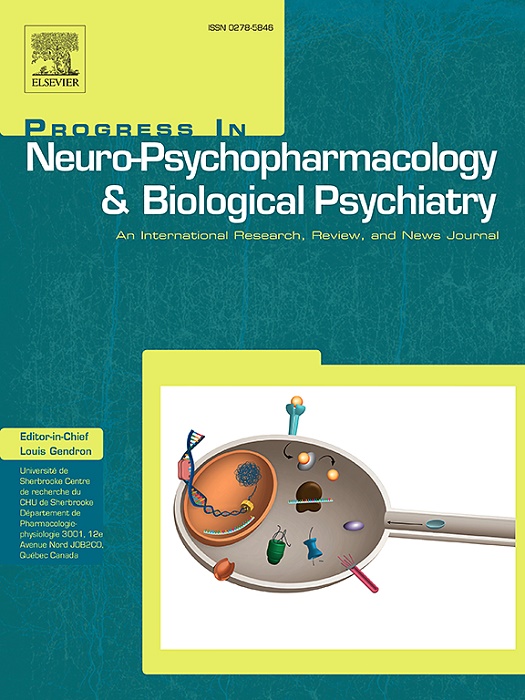靶向细胞衰老治疗癫痫的新前沿。
IF 3.9
2区 医学
Q1 CLINICAL NEUROLOGY
Progress in Neuro-Psychopharmacology & Biological Psychiatry
Pub Date : 2025-09-22
DOI:10.1016/j.pnpbp.2025.111506
引用次数: 0
摘要
癫痫是一种危及生命的脑部疾病,约占世界人口的1- 2% 。已经确定了促进癫痫发展和发作传播的各种机制。然而,提高对癫痫发展的细胞机制的理解对于设计更好的癫痫治疗策略是必要的。细胞衰老是一种细胞生长永久停止并导致细胞退出增殖池的细胞机制,与多发性硬化症、阿尔茨海默病、帕金森病和癫痫等神经系统疾病有关。驱动细胞衰老的各种机制以及表征衰老细胞的表型如何与癫痫的发生和进展相关联,可能是提高我们对癫痫的理解所必需的。因此,本文综述了细胞衰老的相关机制和途径,以及衰老相关分泌表型(SASP)如何促进炎症和组织功能障碍。然后,我们解释了包括脑细胞在内的不同类型的细胞是如何衰老的,细胞衰老与癫痫之间的相互关系,以及癫痫和细胞衰老共同的潜在生物标志物。最后,我们回顾了抗衰老药和同形药在癫痫治疗中的应用。因此,进一步的研究可以针对彻底了解癫痫发展中的细胞衰老,这可以为癫痫治疗开辟新的领域。本文章由计算机程序翻译,如有差异,请以英文原文为准。
New frontier for epilepsy treatment through targeting cellular senescence
Epilepsy is a life-threatening brain disorder that affects about 1–2 % of the world's population. Various mechanisms facilitating epilepsy development and seizure propagation have been identified. Nevertheless, an improved understanding of the cellular mechanisms that underlie epilepsy development is necessary for designing better therapeutic strategies for epilepsy treatment. Cellular senescence, a cellular mechanism wherein cell growth is permanently halted and causes cells to exit the proliferative pool, has been associated with neurological disorders such as multiple sclerosis, Alzheimer's disease, Parkinson's disease, and epilepsy. How the various mechanisms that drive a cell towards senescence and the phenotypes that characterize senescent cells are associated with the development and progression of epilepsy might be necessary in improving our understanding of epilepsy. Therefore, this review discusses the mechanisms and pathways associated with cellular senescence and how senescence-associated secretory phenotype (SASP) promotes inflammation and tissue dysfunction. We then explained how different types of cells, including brain cells, become senescent, the inter-relationship between cellular senescence and epilepsy, and potential biomarkers common to epilepsy and cellular senescence. Finally, we reviewed the use of senolytics and senomorphics for epilepsy treatment. Further research can, therefore, be directed towards a thorough understanding of cellular senescence in epilepsy development, and this can open new frontiers for epilepsy treatment.
求助全文
通过发布文献求助,成功后即可免费获取论文全文。
去求助
来源期刊
CiteScore
12.00
自引率
1.80%
发文量
153
审稿时长
56 days
期刊介绍:
Progress in Neuro-Psychopharmacology & Biological Psychiatry is an international and multidisciplinary journal which aims to ensure the rapid publication of authoritative reviews and research papers dealing with experimental and clinical aspects of neuro-psychopharmacology and biological psychiatry. Issues of the journal are regularly devoted wholly in or in part to a topical subject.
Progress in Neuro-Psychopharmacology & Biological Psychiatry does not publish work on the actions of biological extracts unless the pharmacological active molecular substrate and/or specific receptor binding properties of the extract compounds are elucidated.

 求助内容:
求助内容: 应助结果提醒方式:
应助结果提醒方式:


